- Make It Yourself Lavender Heart-Shaped Bath Bombs!
- 20 Things You Never Knew About “Down There”
- 12 Best Foods For Those Suffering From Arthritis Pain
- 12 Personal Hygiene Mistakes Almost Everyone Makes (Mom Never Told You About #4!)
- 15 Medicinal Plants And Herbs From The Cherokee People
- 12 Mind-Blowing Benefits Of Drinking Coconut Water During Pregnancy
- 12 Outstanding Winter Foods That Won’t Fatten You Up Like A Christmas Turkey
13 Antibiotics You Should Always Have On Hand (No Prescription Required!)
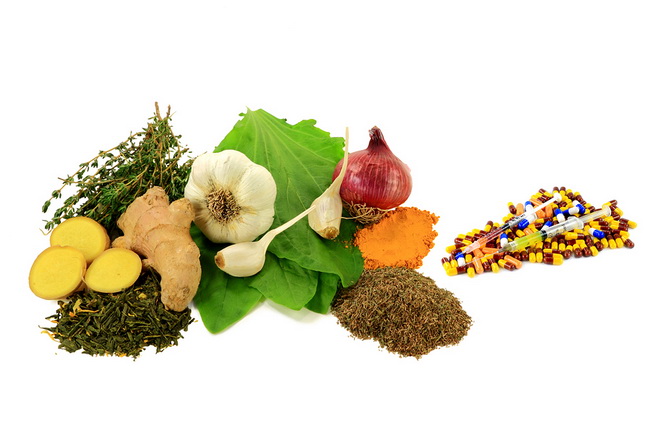
Photo credit: bigstock.com
Flu season is just around the corner, friends. You have probably already seen those ads for flu shots popping up everywhere.
There is no doubt that antibiotics have saved lives, and in time of need, they can be of real benefit. We are certainly not here to knock antibiotics — only our overuse of them.
Since antibiotics were introduced to mainstream medicine in the 1940’s, people have forgotten which natural antibiotics work for us.
Antibiotics are one of the most overprescribed drugs of our modern age. Worse yet, they don’t kill fungal infections, viruses, or ease sore throats and coughs caused by other problems. Yet, this is exactly what most people go to the doctor looking to cure: Their nagging cough or their flu symptoms.
Because of this, we have created a world filled with super bugs, bacteria that no longer respond to antibiotics.
There are numerous natural substances on this earth that are effective at treating most common health problems, including viruses, fungal infections, and minor, non-life threatening infections.
The best news about natural antibiotics? They won’t create super bugs, they will help kill viruses and fungus, and they don’t kill off the good bacteria in your body — only the bad guys.
We have made a list of 13 of the best natural antibiotics that you should have on hand this cold and flu season. You can avoid the flu shot, avoid a trip to the doctor, and avoid complications from antibiotic use.
Keep reading: This is valuable information your great grandmother knew, but, in all likelihood, it was not passed on to you.
1. Pau d’Arco
Whenever you consume prescription antibiotics, you kill off the good bacteria in the digestive system, which often leads to yeast infections, especially one type of fungus known as candida. Pau d’Arco is a terrific antifungal agent that can stop the growth of candida and the sugar cravings that come along with it.
By eating plenty of probiotic foods and stopping candida from growing by consuming herbs such Pau d’Arco, you can allow the “good” bacteria in your gut to regain their numbers and control. Most of your immune system is located in your digestive system, so you would be wise to take steps to start improving it today. This plant has been used as medicine for thousands of years. In 2010, the Journal of Biology published a study finding that Pau d’Arco is highly effective when it comes to fighting fungi. This is most commonly consumed as a tea, but it does seem to be an acquired taste.

Photo credit: bigstock.com
2. Honey
This is one of the best, and perhaps oldest, natural antibiotics around. Raw, organic honey has antimicrobial, antiseptic, and anti-inflammatory compounds. The American Chemical Society even found that honey was able to fight infection on multiple levels. This makes it almost impossible for bacteria to build a resistance to it. Honey’s unique combination of high sugar, acidity, and hydrogen peroxide, along with polyphenols, helps it kill numerous types of bacteria.
Manuka honey is the most potent type of honey you can buy, but any raw, organic honey will fight infection. You can also improve your immune system and fight seasonal allergies by simply consuming one tablespoon of honey each day. Add it to your favorite herbal tea or smoothie for easy consumption.
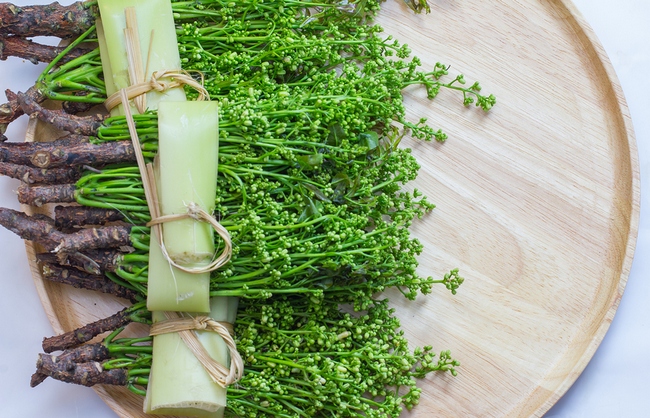
Photo credit: bigstock.com
3. Neem
Sometimes called Indian Lilac, neem helps fight common types of bacteria that cause acne and pimples. Unlike many of the antibiotic creams that most doctors prescribe, neem will not cause the bacteria to build up a resistance over time. Neem is also great for fighting the bacterial infections that cause cavities, gingivitis, and other types of gum disease.
Use neem oil as a face wash to prevent acne outbreaks. Neem also comes in tablet form to remove parasites and remove accumulated toxins in the body. Speak with your doctor about the proper dosage for your situation.
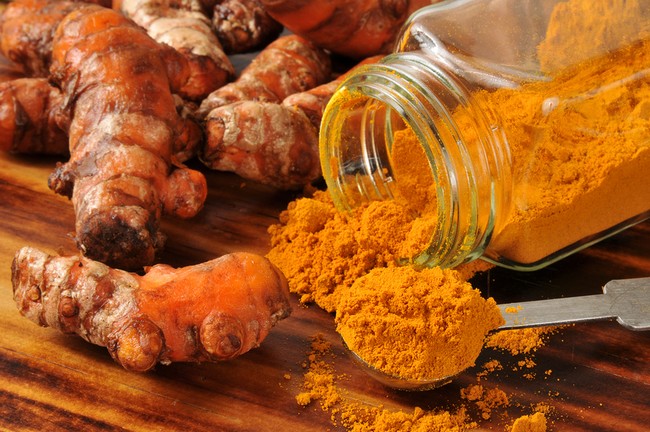
Photo credit: bigstock.com
4. Turmeric
Turmeric’s antibiotic compounds are used often in both Chinese and Ayurvedic medicine to kill bacteria while stimulating the body’s own natural defense system. The journal Antimicrobial Agents and Chemotherapy published a study in 2009 which found that the active ingredient in turmeric, curcumin, worked well against the helicobacter pylori, which is known to cause ulcers and stomach cancer. You can consume turmeric supplements, but you should speak to your doctor about the proper dosage.
Otherwise, mix one tablespoon of turmeric powder in a glass of milk and drink once per day for internal infections. For external use, mix two teaspoons of turmeric powder in five tablespoons of raw, organic honey. Store this mixture in an airtight jar. You can apply this directly to skin infections or consume half a teaspoon of this mixture each day.
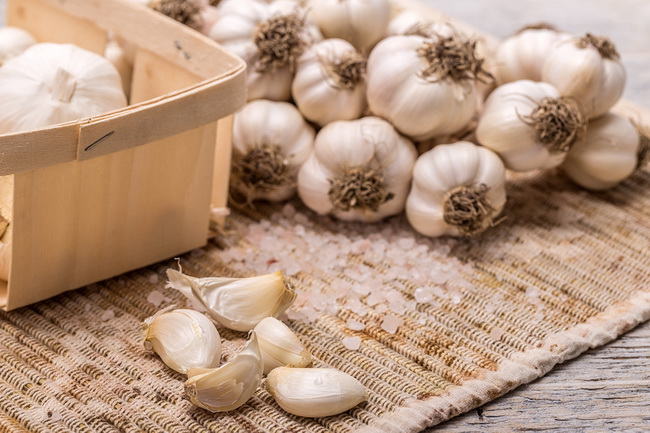
Photo credit: bigstock.com
5. Garlic
This antiviral, antifungal and natural antibiotic is as old as time itself. The journal Microbes And Infection published a 1999 study which found that allicin, the sulfuric compound in garlic that gives it such a strong smell and flavor, worked just as well as several prescription antibiotics. Garlic also has plenty of minerals, vitamins, and other nutrients known to keep the heart and arteries healthy.
Regular consumption of garlic can also kill internal parasites. Garlic needs to be crushed or cut to release its active ingredients. Crush a clove or two of organic garlic and swallow them whole, if you can. Otherwise, dice up some garlic and add it to everything, including salads, vegetable dishes and stir frys. There are garlic supplements, but you should speak with your doctor before you consume them.

Photo credit: bigstock.com
6. Colloidal Silver
Although the antibiotic nature of colloidal silver has been known and used for centuries, it wasn’t until the early 1900’s when a man named Alfred Searle wrote a book about using colloidal silver did it come into more mainstream use. Nothing can live in the presence of silver. This substance causes death to microbes very quickly without having any effect on the human host. In studies with rabbits, the ones who were given colloidal silver could deal with 10 times the lethal dose of tetanus or diphtheria than rabbits who did not consume silver.
Colloidal silver is highly antibiotic, so much so that it even kills bacteria which are resistant to all other types of antibiotics known to man. You can consume too much colloidal silver, however, so it is best used externally.
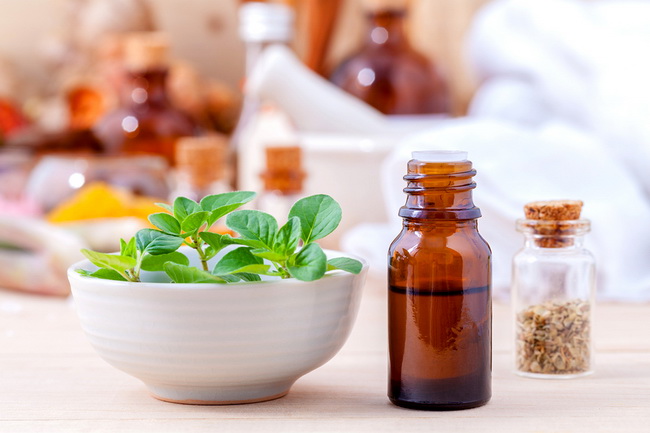
Photo credit: bigstock.com
7. Oil Of Oregano
Georgetown University Medical Center published a 2001 study finding that oregano oil was effective against drug-resistant bacteria. The main active ingredient in oregano — carvacrol — has been shown to fight bacterial infection just same effectively as prescribed antibiotics.
SEE ALSO: Try This Natural Super Antibiotic Tonic to Clear the Arteries and More!
Oil of oregano has antiviral, antioxidant, antiseptic, anti-parasitic, antifungal, and pain-killing compounds that rival any antibiotic.
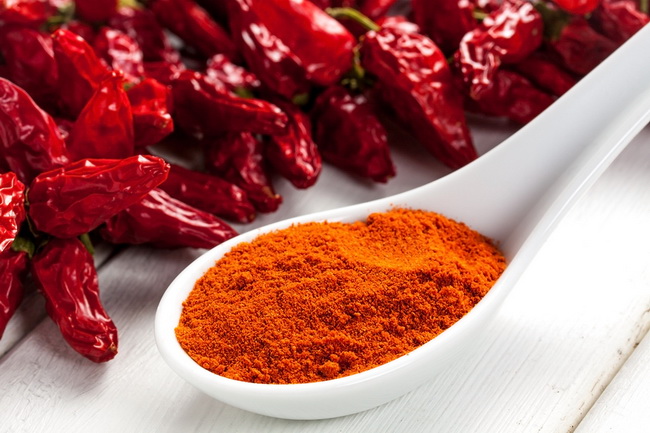
Photo credit: bigstock.com
8. Cayenne Pepper
You might not think of this spice as being able to fight infections, but it certainly does! Cayenne pepper has been used for centuries to help people heal faster. The active ingredient in this spice, capsicum, is especially known for its ability to fight vulvovaginitis, a common infection for many women. One study found that capsicum had powerful antibiotic and antifungal compounds that were effective in fighting infections, including vulvovaginitis.
Cayenne must be properly diluted, however, to avoid burning and irritating the skin. There are plenty of creams and lotions that contain cayenne pepper, or you can buy the essential oil and mix it with olive oil or coconut oil to dilute it.
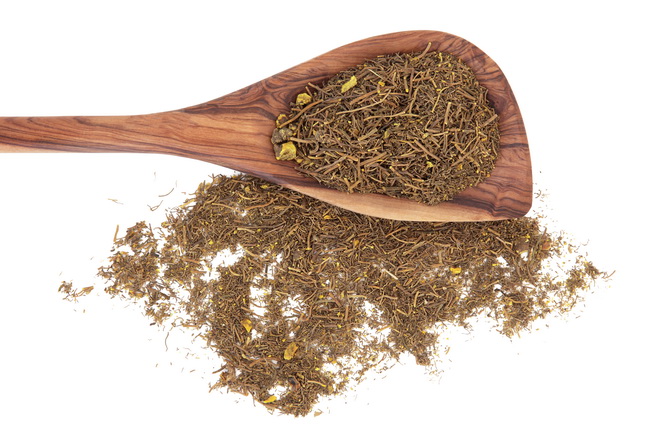
Photo credit: bigstock.com
9. Goldenseal
Used by Native Americans for centuries, goldenseal works well for both topical and internal infections. The main active compound in goldenseal, berberine, kills many types of bacteria. Goldenseal stimulates white blood cell activity, which allows your body to fight many infections on its own. This will also stimulate and strengthen your own immune system.
Most people consume goldenseal as a tea, often in combination with Echinacea. For external use, try mixing some goldenseal with vitamin E oil, and apply it directly to infected areas twice each day. You should not consume goldenseal for more than two weeks at a time. Allow two weeks to pass before consuming it again.
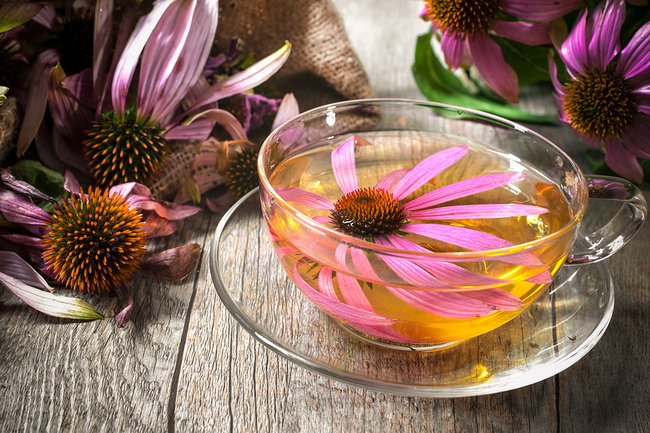
Photo credit: bigstock.com
10. Echinacea
Echinacea is the gold standard when it comes to fighting infections and viruses. Sometimes called purple cone flower, it has also been used by the Native American people for centuries to fight infections naturally. You can use a cream or ointment that contains Echinacea extract directly to most skin wounds, including eczema and psoriasis. For the cold and flu virus, most people consume Echinacea tea with some honey and lemon two or more times each day.
It is important to note that if you have any type of autoimmune problem, you should not use Echinacea internally. Also, like goldenseal, do not consume for more than 10 days at a time.
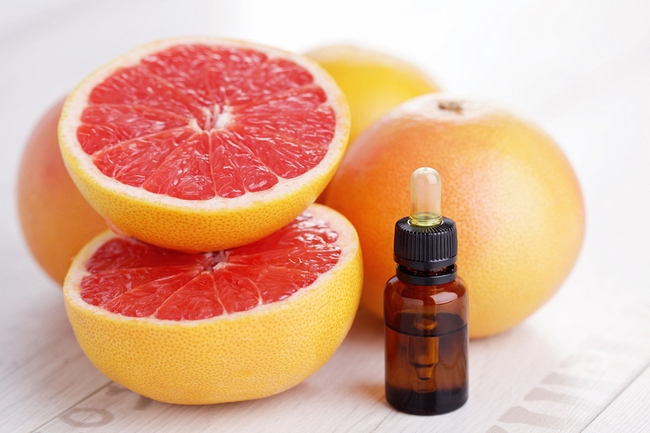
Photo credit: bigstock.com
11. Grapefruit Seed Extract
This is another compound that has been used for hundreds, if not thousands of years, due to its antiviral, antifungal, and antiseptic compounds. In numerous studies, including one published in the Journal of Alternative and Complimentary Medicine in 2002, grapefruit seed extract was more effective than antibiotics in tests done with more than 800 viruses and forms of bacteria, parasites, and 100 different strains of fungus. For simple skin infections, just a few drops of grapefruit seed extract in one tablespoon of water can be applied directly to the infected area.
Allow to dry — no need to wash it off. Use this same mixture to wash your face to prevent acne, and use it as a natural mouthwash to kill oral bacteria. You can even put 15 drops of grapefruit seed extract in a glass of water and drink two or more times each day to kill internal infections and viruses, such as the flu and the common cold.
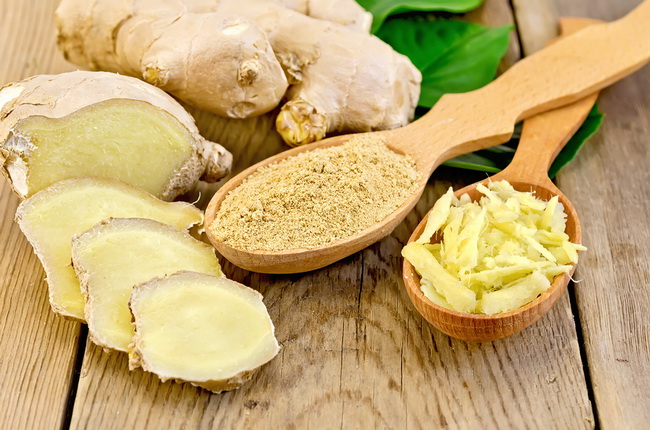
Photo credit: bigstock.com
12. Ginger
The natural antibiotic compounds in ginger have been known for centuries. Fresh ginger works well when it comes to fighting food-borne pathogens, such as salmonella. Ginger also works well on gum infections and respiratory infections, such as bronchitis.
Ginger tea is one of the best preventative and curative antibiotics that can be consumed daily without problems. Drink two or three cups of ginger tea each day during the flu season to lower your risk of catching the flu!
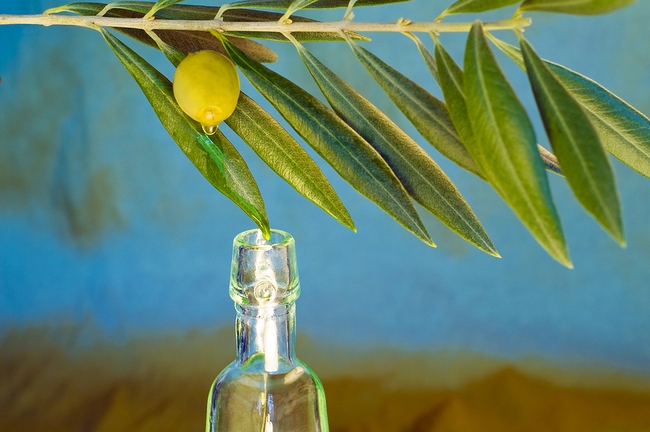
Photo credit: bigstock.com
13. Olive Leaf Extract
Olive leaf extract is well known for treating several types of bacterial infection. The journal Mycoses published a study in 2003 finding that olive leaves have excellent antimicrobial compounds for fighting fungi and bacteria. Olive leaf extract has antioxidant and anti-inflammatory compounds as well. This is typically consumed as a supplement. A typical dose is 250 to 500 mg capsules twice each day; however, you might want to consider speaking with your doctor to be certain you are taking the correct dosage for your situation.
You can also make your own olive leaf extract for external use. Chop olive leaves finely, and put a handful of chopped leaves into a glass jar, such as a mason jar, or a bottle with a tight-fitting lid. Add vodka to the leaves just to the level until they are covered. Make sure the lid is closed tightly, and store the jar in a dark place for four to six weeks. Shake the jar every now and then, at least daily. After six weeks, strain the liquid through a cheese cloth into another glass jar. You can use this substance over cuts, burns, and other skin wounds.
References:

































